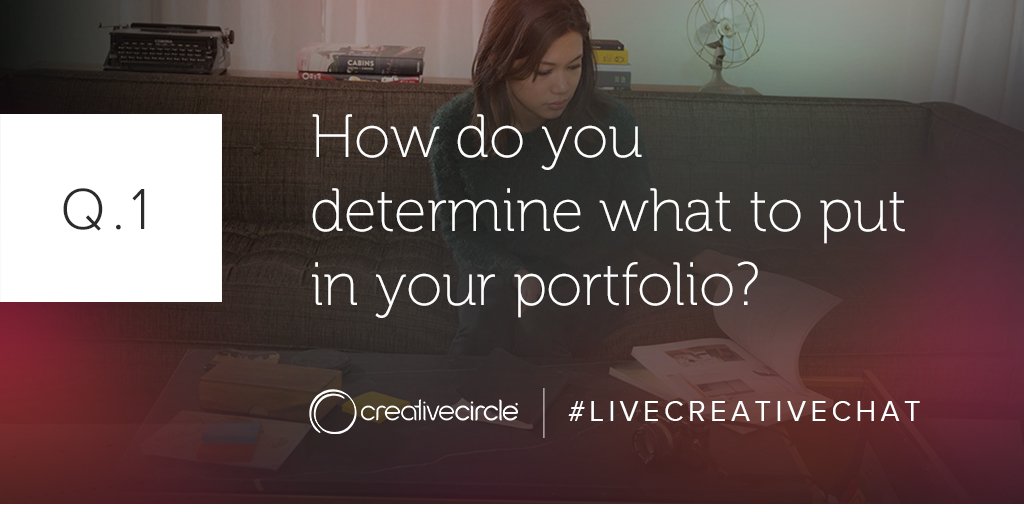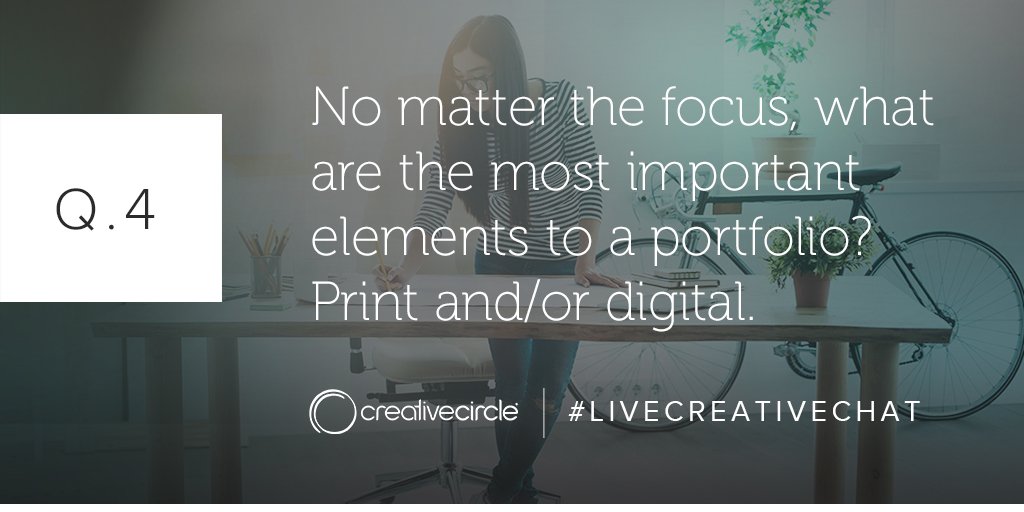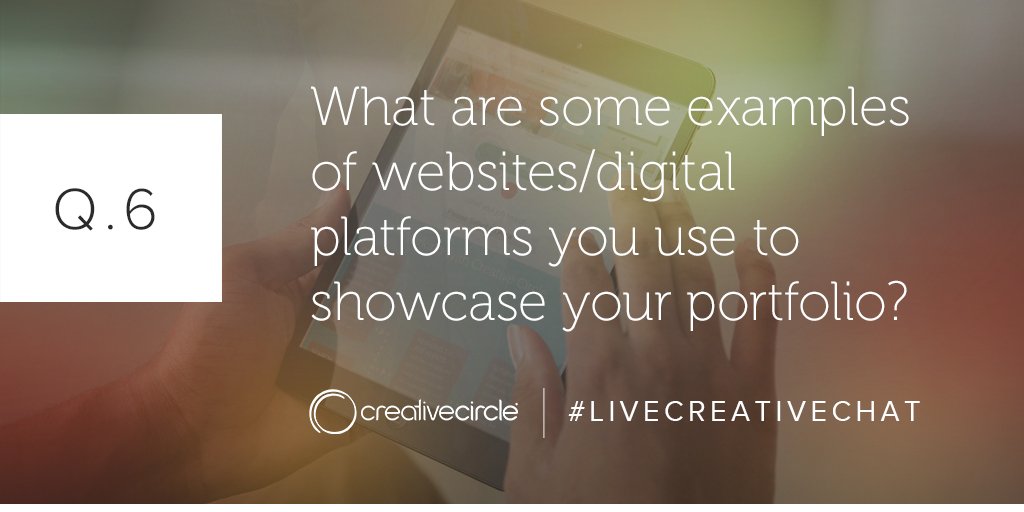#LiveCreativeChat Recap
It’s easy to say you’re an out-of-the-box visual thinker or a witty tagline machine, but the only way to show what you’ve got is through your work. Enter: the portfolio. Instead of listing your experiences on a boring sheet of paper like an average resume, embrace the portfolio as a chance to advertise not only what you’re capable of, but what it means to #livecreative. Both you and your future employer will appreciate it.
We turned straight to the source for what recruiters, employers, and other creatives look for in a successful portfolio in our monthly #LiveCreativeChat on Wednesday, April 19. Check out the highlights below on what makes your portfolio a representation of who you are and what you have to offer. Also be sure to check out our Portfolio Guide for more resources.

A1: Start with the best. Include recently produced work. Limit the amount of pieces you show to around 10. #LiveCreativeChat
— Brian (@NYCreativeRcrtr) April 19, 2017
@Creative_Circle A1: Whatever I’m most proud of – whether it’s a big name or just quality work #livecreativechat
— Jake Earl (@hey_youre_hired) April 19, 2017
Your portfolio should be a compilation of your best and most recent work. Make your portfolio a reflection of who you are as an individual by showcasing your most unique and creative pieces.

A2 Carry your brand from your resume to your portfolio, make them one cohesive unit! #LiveCreativeChat
— Rob Petrosino (@PetrosinoRob) April 19, 2017
A2. Your portfolio should reflect your unique qualities as an individual and showcase who YOU are (: #LiveCreativeChat
— Kate Mackie (@KateMackie5) April 19, 2017
After selecting what to show in your portfolio, stay cohesive – make it look like a complete family of design work. Your portfolio is a chance to express your creative aesthetic and your passions.

@Creative_Circle I add projects and reorganize them as I go, usually at least once or twice a quarter #LiveCreativeChat
— Nika Pantaleon (@nikapants) April 19, 2017
@Creative_Circle A3: I update when I have new pieces I want to showcase to show the growth of my portfolio #LiveCreativeChat
— Shaunda Lambert (@_simplyshaunda) April 19, 2017
@Creative_Circle When they aren’t a representation of my brand anymore, or they are dated. #livecreativechat
— Shaunda Lambert (@_simplyshaunda) April 19, 2017
@Creative_Circle A3: whenever I finish a new project or look into a new position, it’s time to re-evaluate, if only for a second #livecreativechat
— Jake Earl (@hey_youre_hired) April 19, 2017
Your portfolio should be updated as you start to take on new projects that you want to showcase. Interested in learning secrets to a successful portfolio? Download our Portfolio Guide here.

A4 Include info on the client, E.G. Problem + Solution = Result. Your results show how creative you are. #LiveCreativeChat
— Rob Petrosino (@PetrosinoRob) April 19, 2017
@Creative_Circle I think FAQ section along with showcasing your work with the fewest clicks possible. Progressive disclosure is key
— Yusef Trowell (@yusefulmind) April 19, 2017
@Creative_Circle https://t.co/Y0VgHMHVPE
— Yusef Trowell (@yusefulmind) April 19, 2017
A4: Include a bio – tell us about you in addition to your work! #LiveCreativeChat
— Brian (@NYCreativeRcrtr) April 19, 2017
The most important elements in a portfolio are variety, unity, showing your best work, and personal branding. In terms of variety, you want a collection of exceptional work that captures the range of your skill set. To focus on unity, make sure your presentation method flows nicely and that the pieces complement each other. Showcase your best work because your portfolio is only as strong as your weakest piece, and make sure your portfolio reflects your personal brand: the essence of your work and you as an individual.

@Creative_Circle Q5: Ideally, there should be blog posts that accompany the pieces so you can explain why you did what you did. #LiveCreativeChat
— Jim MacLeod (@JimMacLeod) April 19, 2017
@Creative_Circle A5: I agree with @JimMacLeod an explanation of work is extremely important. Who what where when how #livecreativechat
— Caitlin Slezak (@caitlin_slezak) April 19, 2017
Shine a light on your critical thinking skills by succinctly breaking down each project from start to finish. Showcasing your design process and the ideas you brainstormed for a client can help show your problem-solving capacity.

A6: @behance, @adobeportfolio, @squarespace & @carbonmade are all great websites to showcase your portfolio digitally. #livecreativechat
— Creative Circle (@Creative_Circle) April 19, 2017
@Creative_Circle WordPress has never failed me. #livecreativechat
— Shaunda Lambert (@_simplyshaunda) April 19, 2017
@_simplyshaunda @Creative_Circle I started building my own website in 2002 because it was too expensive to mail portfolio pieces. #LiveCreativeChat
— Jim MacLeod (@JimMacLeod) April 19, 2017
Sad it’s over? Sorry you missed the live conversation? Don’t worry – we have a live Twitter Chat on the 3rd Wednesday of every month at 12pm PST! Tune in then for the next #LiveCreativeChat.
Want to hear more about building your portfolio? Download our full Portfolio Guide here.
